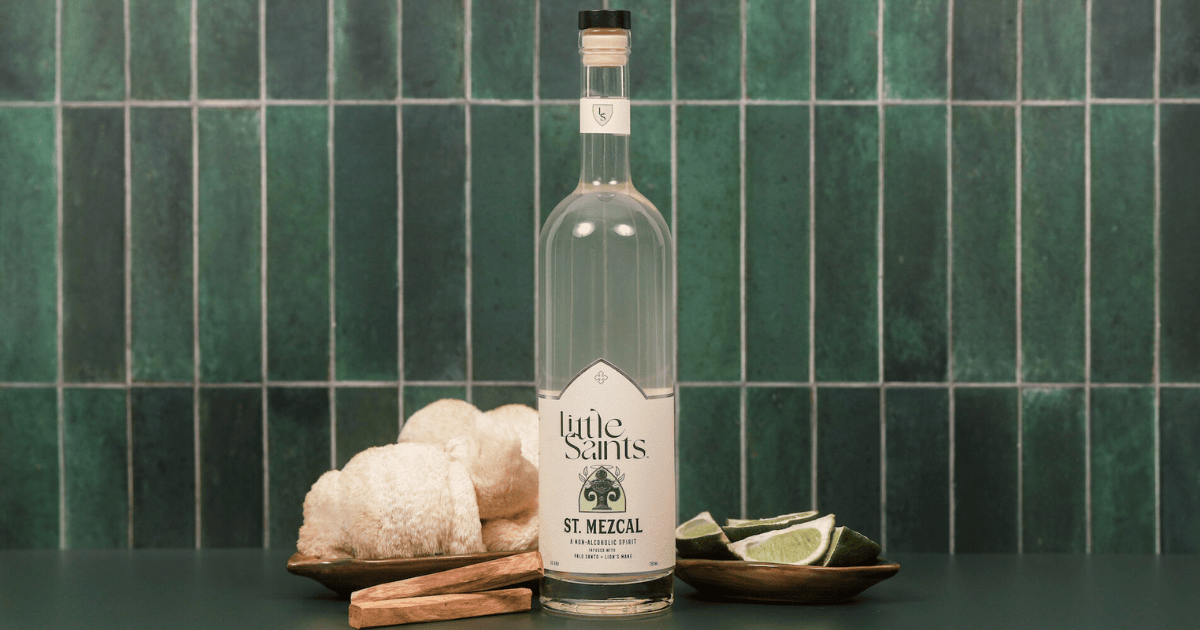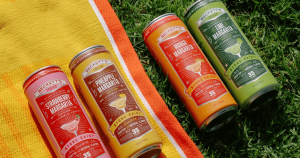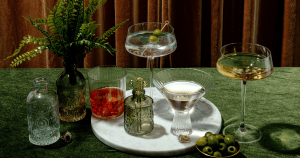Functional beverage founders know: the idea is the easy part. The hard part is making sure your product is feasible to manufacture, shelf-stable, and something that consumers keep coming back for.
That’s where Michael Colangelo, flavor chemist and founder of MC Flavors, shines. In a recent Dry Atlas webinar, he shared actionable insights for anyone developing a functional beverage, especially those incorporating nootropics or adaptogens.
Dry Atlas: Let’s start with the basics. What are nootropics and adaptogens, and how are they different?
Michael Colangelo: Nootropics are substances that enhance cognitive function. Things like memory, focus, or creativity. Caffeine is the most widely consumed nootropic, but others include L-Theanine and lion’s mane.
Adaptogens, on the other hand, help the body manage stress and return to a state of balance. Common examples are ashwagandha, rhodiola rosea, and ginseng. They’re plants, often with long histories in traditional medicine. While nootropics generally act on alertness or brain function, adaptogens are more about stress resilience and recovery.
DA: What are the biggest challenges in working with these ingredients?
MC: The top two are solubility and stability. Most of these ingredients aren’t very water-soluble, and you’re putting them in beverages, which are mostly water. So that’s your first hurdle.
The second is that many of them degrade over time or when processed. You may start with a functional level of lion’s mane or ashwagandha, but if it breaks down during pasteurization or over a few months on the shelf, you’ve lost both the benefit and the consumer trust.
You also have to think about bioavailability. Just because it’s in there doesn’t mean it’s doing anything. If the amount is too low, the customer won’t feel it. And you can’t just label a “proprietary blend” and call it a day, at least not if you want to build a reputable brand.
DA: What makes lion’s mane particularly tricky to formulate with?
MC: It’s a great example of all these issues. Lion’s mane has poor bioavailability, poor solubility, and a very earthy, mushroom-forward taste. So when you add enough to feel a benefit, the taste starts to become a real problem.
That’s why you need to start with high-quality extract. Good inputs lead to good results! From there, it’s a flavor challenge. Masking agents, sweetness, acidity, pairing ingredients well—those are all ways to make it palatable. But if you start with weak lion’s mane or not enough of it, it might taste fine and do nothing.
DA: Some brands want to avoid ingredients like stevia. Are there good alternatives?
MC: Stevia works great if it’s used correctly and with quality inputs, but it’s polarizing. For those avoiding it, monk fruit is popular now. That said, monk fruit has its own taste challenges. A former colleague once described its off-note as “wet dog” when overused.
There are other tools: MagnaSweet (a licorice root derivative), thaumatin (a natural protein sweetener), chicory root, vanilla extract. Some people even use botanicals to distract the palate or layering strategies that keep flavor evolving with each sip.
DA: Let’s talk about clean label. What does it actually mean, and how does it impact formulation?
MC: “Clean label” doesn’t have a regulated definition. Most people mean short ingredient lists, recognizable names, and no artificial additives. But it’s vague, and often more of a marketing term than a technical one.
Here’s the problem: taste and shelf life often rely on things that don’t sound great on a label. Masking agents, natural flavors, stabilizers. If you eliminate those entirely, your product might not taste good, or it might not survive on the shelf.
You have to draw the line somewhere. I’m a fan of starting as clean as possible, then adding tools as needed when the taste or stability just isn’t working. It’s a process.
DA: Let’s switch gears to production. What should founders know before working with a co-manufacturer or flavor house?
MC: Co-mans are incentivized to make your product run efficiently on their equipment, not to make it taste the best or function the best. That means they may suggest changes or shortcuts that aren’t ideal for your vision.
And flavor houses will often offer “proprietary blends,” or formulas that include functional ingredients but don’t tell you what’s in them or at what levels. It might say “contains lion’s mane and rhodiola,” but you don’t know how much of either. Half the blend might be filler.
DA: Why is that dangerous?
MC: Because when something goes wrong—maybe your supplier runs out, or you want to switch co-mans—you have no idea what you were working with. You can’t replicate or improve it.
Founders need to own their formulas. Ask for documentation, spec sheets, concentrations, and shelf stability data. Know what’s going into your product and why. If you don’t, you’re not just risking functionality, you’re also risking the long-term control of your business.
DA: What questions should every founder ask before sourcing an ingredient?
MC: There are quite a few I can think of.
- What’s the potency or standardization?
- What’s the shelf stability?
- How does it behave in liquid form?
- Are there any known solubility or processing issues?
- Has it been tested in beverage applications?
You need to ask these questions whether it’s lion’s mane, ashwagandha, or a sweetener. If you don’t know how it performs, you’re setting yourself up for trouble later.
DA: Let’s talk shelf life. What’s the standard for a functional RTD product?
MC: If your finished product can’t hold up for at least 12 months, it’s probably a no-go. Most powdered ingredients should have 24 months of stability, unless it’s a refrigerated extract, which is rare.
Finished products should show no separation, no loss in flavor, and no degradation in functionality for at least one year. Ideally, shoot for 18–24 months. Otherwise, you risk losing retail placement or having to eat the cost of expired stock.
DA: What’s the most common mistake you see early-stage brands make?
MC: Trying to cram too many functional ingredients into one product. It creates flavor problems, stability issues, manufacturing complexity, and often dilutes the benefit. Pick two or three core functional ingredients and do them really well.
It’s also common to ignore how ingredients interact over time. Something that tastes good in an R&D setting might change dramatically on shelf. Or the actives might degrade. Don’t assume; it always needs testing.
DA: Lastly, any final advice for founders working on a functional beverage?
MC: Don’t rush. Simplicity wins, especially at the beginning. Build around one clear functional benefit. Use quality inputs. Be honest about trade-offs. And always understand your product better than anyone else in the room.
There are more tools and ingredients available than ever before. That’s exciting, but overwhelming. So choose your north star and let that guide every decision. That’s how you build something that works and lasts.
This interview has been edited for length and clarity.






